Our tutor, Paul Lewin, sweeps his hand over the dramatic coastal scene in front of us.
"Your sketchbook is the first point of contact with the landscape," he tells us. "It’s only through sketching that you begin really connecting with a place. Although that first drawing is likely to be a disaster!"
"Rather like the first pancake you cook on Shrove Tuesday?" I offer.
"Yes!" Paul laughs. "But that sacrificial-pancake-sketch is an essential step in getting used to making marks whilst also zoning in on the composition that will become the bones of your painting."
It is late morning on the first day of Paul’s Seascapes and Landscapes course: a three-day experience of creating vibrant watercolour paintings outdoors.
We’re gathered at Pendeen Watch, overlooking plunging cliffs, spray-soaked rocks and a swirling, restless sea. Soon, we’ll be making our first attempts at painting this incredible location, but first we need to acclimatise our eyes and warm up our creative muscles.
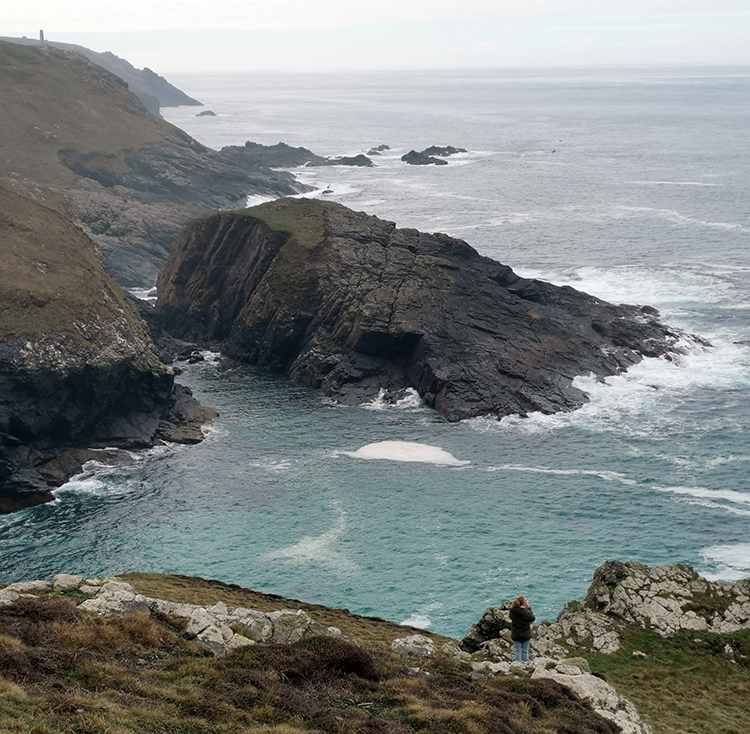
We span out over spongy grass and heather, pausing at different viewpoints before settling down to draw. I find myself sheltered spot beside a boulder, and find comfort in its steady presence as I ponder the magnitude of the scene ahead.
Paul seeks each of us out, with our chosen viewpoints, and offers advice on how to reframe our sketches to create more effective compositions. The key, we’re all learning, is to break down the scene into simple shapes, working out our focal point... that place where the eye naturally rests.
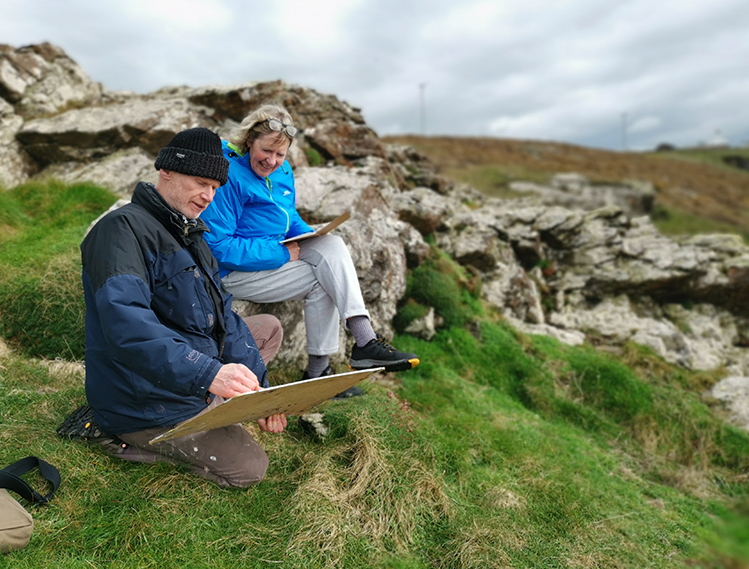
Paul shares fundamental principles about composition, proportion and perspective that guide us in creating pleasing arrangements, assuring us that we will soon be able to sense when the basic elements of our composition are working well.
In the afternoon we begin painting with a limited colour palette, plus white gouache for highlights. Our paper has been prepared with a rusty red wash, providing a warm mid-tone as a helpful starting point. The limitation in colour allows us to focus on creating an evocative tonal study with a surprising range of tonal variation!
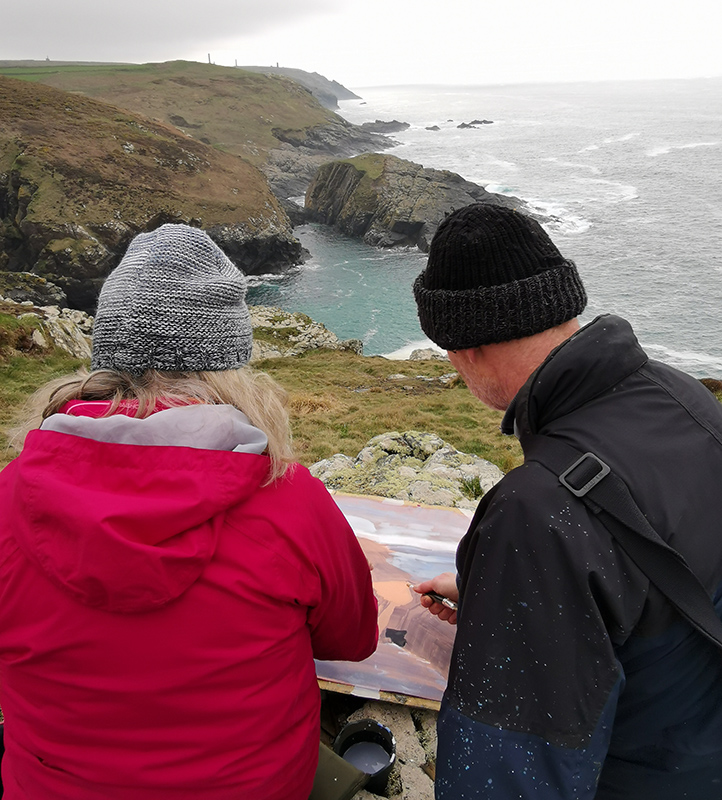
A dedicated landscape painter of thirty years, Paul Lewin masterfully evokes the drama of the Cornish coastline.
Although he works mostly in watercolour, the way he uses the medium is very different to many watercolourists. Paul enjoys using a vibrant palette, applying watercolour with bold and confident gestures, rather than working in thin washes.
"When you’re painting in a Force 8 gale, you can’t afford to waste time on doing loads of layers with thin wet paint bleeding into everything," he explains.
Paul’s brushwork is deft, yet energetic. Broad brushstrokes are layered with directional splatters of thrown paint, with sparkling highlights applied with a thin blade.
"Suggest rather than describe," Paul advises as, with a practised hand, a flick of paint indicates a deep fissure in a cliff, a jumble of rocks, or a tangle of seaweed in his demonstration. As a result, there’s a signature vibrancy and energy to his paintings.
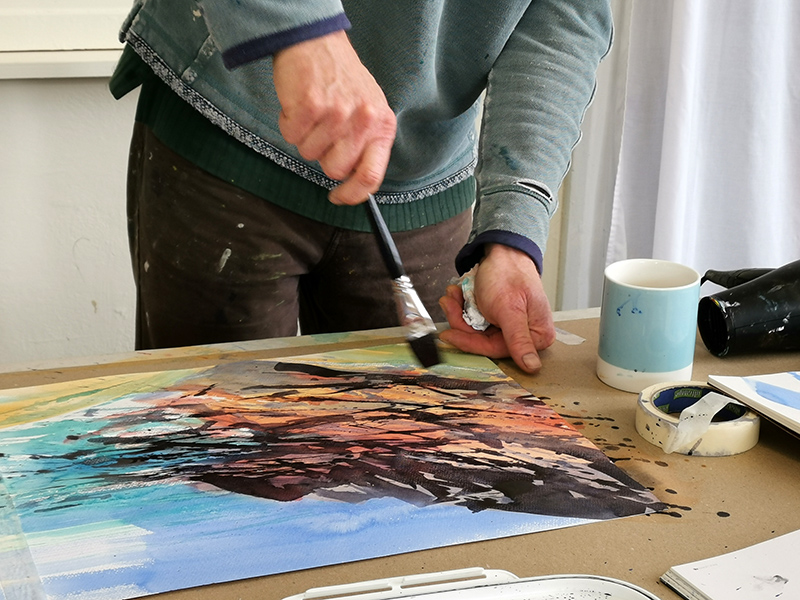
Each day begins with a stunning demonstration or informative exercise in the studio before we head to a new location - a rugged clifftop, an idyllic cove, or craggy headland - each time with additional techniques to explore.
Painting outdoors is the main focus of this course.
"What you get from being outside is a real, visceral experience which is going to feed into your painting," Paul enthuses.
"You’re going to come back with work that’s more truthful to your experience of a place, even if it isn’t always strictly accurate. Actually, sometimes the imperfections are the most interesting things about a painting."
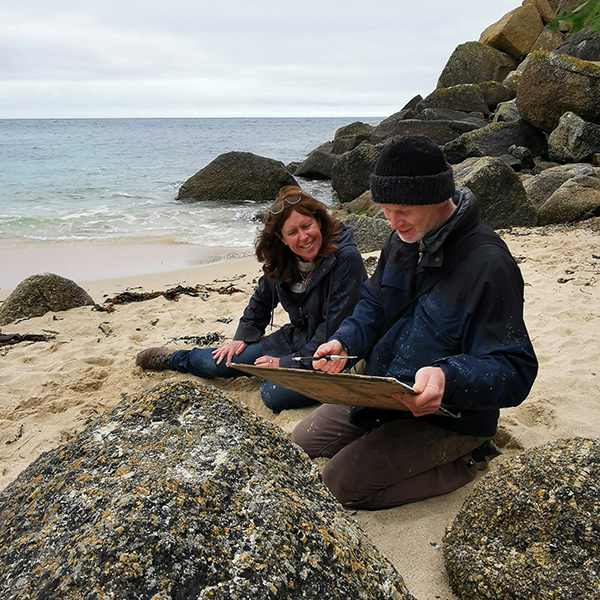
We’re encouraged to remember that the land, the sea and the sky are all connected, and that the environment is constantly changed by the light and atmosphere.
"It’s tempting to paint the sky one colour, the rocks another and then the sea," Paul says as he adds the finishing touches to a demo painting.
"But if you take the time to really see what’s in front of you, you begin to notice that the colour of the sky affects the tone of the rocks and the grass. The rocks don’t just end at the edge of the sea, they flow under the water. Each element speaks to another and by using particular brushstrokes and marks and by echoing colour around the paper, you begin to create a satisfying and cohesive painting."
He urges us to look past all the details and use our marks to reflect our experience of the place. Dynamic brushstrokes exaggerate an angular cliff plunging into the sea; a softer movement might suggest the sweep of a sandy cove or the arc of a grassy bank. A carefully-aimed flick of paint might suggest a split in the rocks or sea spray. Details of grass, flowers or clouds come last, and only if needed.
"Remember," Paul says, "that a good painting leaves something for the viewer’s imagination to fill in."
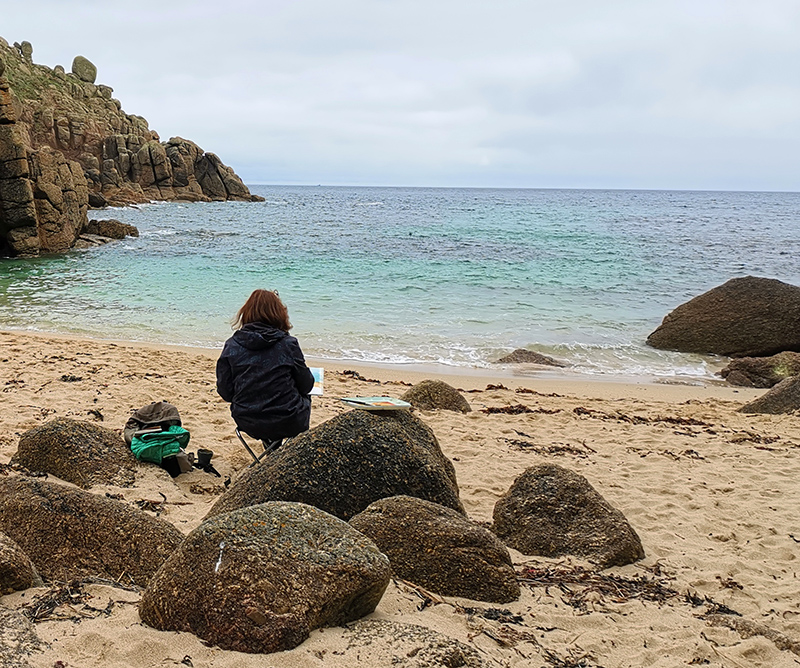
As the course draws to a close, we roll up our paintings with broad smiles. Each of us will have gained something different from this course, and for me, it's a range of wonderfully useful techniques to further my practice, and a renewed enthusiasm for working outside!
- Kari Herbert
You can find out more about Seascapes & Landscapes here.
Paul Lewin also teaches:
Seascapes & Landscapes Online
Tresco Painting Holidays
Beyond the Edges